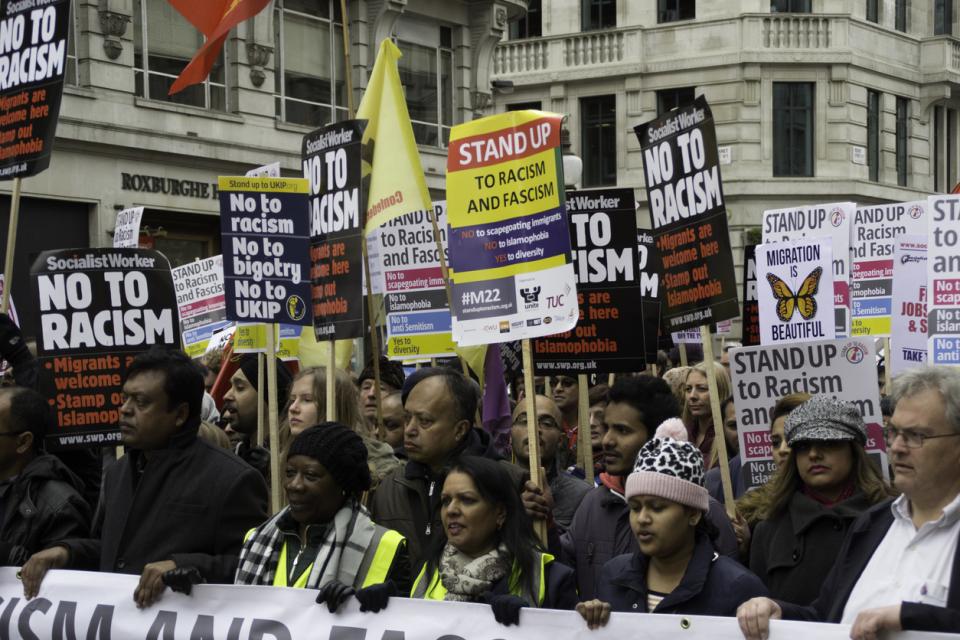Though most people would argue that they are not racist, we know that racism runs rampant in the heads and hearts of many, in our streets, our staff rooms and classrooms. It affects the way staff and students experience their institutions, and therefore their engagement with these institutions, and ultimately their outcomes. Until recently, racism was widely believed to be something racially minoritised people dreamed up and that many individuals and institutions were “racism-free”. Acknowledging the existence of racism in society and our institutions is a first step towards dismantling it. We must name it to tame it. And we must do much more.
The central purpose of higher education is to promote human flourishing. Yet, the flourishing of racially minoritised staff and students in British universities is too often stymied by interpersonal and institutional racism, research shows. Interpersonal racism relates to behaviours exhibited by one person towards another such as verbal attacks, racist name calling or applying a racial penalty in grading. Institutional racism relates to elements within an organisation’s corporate structure that disadvantage individuals or groups on the basis of ethnicity, such as how rules for pay, progression and access to opportunities are applied. Unfortunately, both interpersonal and institutional racism are routine in many universities.
- Spotlight guide: how universities can boost staff diversity
- Doing DEI when you can’t use the ‘D’, the ‘E’ or the ‘I’ word
- ‘There is no workaround to this moment – we are all targets’
Over the past five years, since the murder of George Floyd in the United States, significant effort has been deployed by individuals and institutions towards addressing racism and its effects. While the success of these efforts has been mixed, it is an important recognition that racism remains a problem. This work is now taking place against the backdrop of two interlocking elements: first, widespread anti-immigrant rhetoric from UK political leaders and social commentators. Second, Donald Trump’s and Nigel Farage’s anti-equity, diversity and inclusion (EDI) crusade and their associated political and social movements.
In a recent article I argued that “State representatives have a significant ability to influence public attitudes and opinion, and that although they may not (always) be speaking in the name of, or on behalf of the ‘state’, it may well be assumed by the audience or the public that their views and actions reflect the official state position”. The broadside on EDI unleashed by Trump and Farage, both political and public figures, is an example of this. In effect, their words have power to stir huge numbers of people against anti-racism.
Faced with growing societal division and polarisation, successfully tackling racism requires an approach where multiple individuals and multiple institutions join hands, hearts, heads and resources and work together against it. This is what I describe as a “common enemy approach” which asserts that we are not enemies of each other but rather, racism is our common enemy, and we must unite against it.
There are important prerequisites, however. First, individuals and institutions need to stop diminishing and sometimes second-guessing the racist experiences felt by racially minoritised people. For example, they need to:
1. Acknowledge racism exists in society and, thus, also in universities;
2. Work with racially minoritised and white people in organisations and in communities to identify factors that give rise to racism within these contexts, in order to address them and engage in co-created and co-led institutional and community learning;
3. Work with other local organisations such as universities, schools, colleges, religious organisations, charities, uniformed services, hospital trusts, sports clubs and specialist anti-racist bodies. Not only does this create a multiplier effect, but it capitalises on available community-based resources, people and ideas leading to more embedded solutions. Together, such groups could collaborate on the development workshop resources on structural racism, drawing on evidence from all their sectors.
Second, individuals and institutions need to stop seeing and treating racially minoritised people who complain about or bring attention to racism as “problems” and “troublemakers”. Instead, they need to:
1. Create meaningful opportunities for university leaders to engage in deep listening and learning. This could be achieved through termly town hall meetings and smaller focused meetings, led by university leaders, and where reported experiences of racism are documented and acted on;
2. Take action against racism, whether from staff or students, and be consistent. This includes better protection and support for victims of racism, termly anti-racism training for all staff as part of performance cycles, year-long non-credit-bearing compulsory anti-racism and EDI modules for all students, and enforcement of disciplinary policies and processes where racist discrimination or bullying is found to have occurred;
3. Hold suppliers and providers of professional or clinical placements such as schools and hospitals to the same standards for tackling racism. If students report experiences falling below these standards, be prepared to remove them from these settings;
4. Involve racially minoritised people in efforts to design solutions, adopting a co-participatory model. This will give voice and agency to racially minoritised people who will be more likely to accept and advocate for solutions they have helped to think through and to design.
Once these shifts have been achieved, we will be able to see racially minoritised people as victims, and pawns, within a larger social, cultural, institutional and political system of inequity. That is why, to be in the best position to effectively tackle racism, we need to move away from seeing white people and racially minoritised people as in conflict with one another.
A common enemy approach allows and demands that we draw voices and talents from every varied segment of our higher education system, including university leaders, academics and educators, professional and technical staff, students, parents, community groups and governing bodies. It also requires institutions to work with individuals and agencies beyond education including sports, health and social care, religion, law and politics.
It demands universities work with further education colleges, secondary schools, primary schools, early years settings and pupil referral units, not as experts but as learners together. A common enemy approach, by design, should include the widest representation of voices, talents, skills and resources.
Racism is a problem in society and in higher education institutions. Racially minoritised people cannot tackle it alone. White people cannot tackle it alone. We need everyone working together – regardless of ethnicity, job role, political affiliation, social status, religion – building on a recognition that we are not enemies of each other but rather, racism is an enemy of us all.
Paul Miller is CEO and principal of the Institute for Equity, University Centre.
If you would like advice and insight from academics and university staff delivered direct to your inbox each week, sign up for the Campus newsletter.




comment